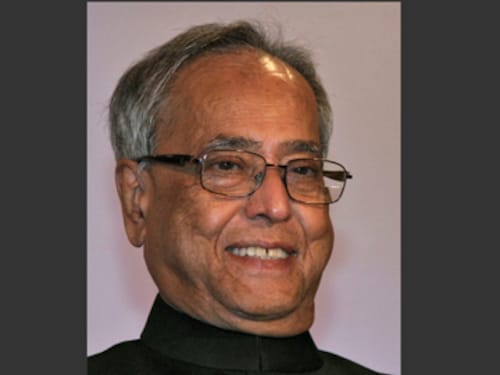Budget: Eye on middle-class muddles up Far Sight
Political compulsions and the threat of further middle-class disenchantment with the Congress party seems to have forced the finance minister to skirt concrete reforms in the Budget


Pranab Mukherjee once told an aide that he does not believe in revolutions but gradual evolution. At a time when the United Progressive Alliance (UPA) government is gripped by a political crisis, expecting the diminutive Congress trouble-shooter, ever the pragmatist, to present a radically reformist Budget perhaps would have been a long shot.
What he presented today is a Budget clearly aimed at the middle-class voter who has been drifting away from the Congress Party over the past couple of years, no less because of Anna Hazare’s trenchant anti-corruption campaign. The economically upper class voter is an insignificant numeric and the lower class has already deserted the party as was evident in the recently concluded state elections. The only voter left to woo was the middle-class one and Mukherjee has clearly gone after him by cutting personal taxes that will collectively cost the government Rs 4,500 crore.
That is why, in spite of data showing that growth slipped because of a slowdown in manufacturing, the Budget does not have anything to address the problems of industry. If anything, additional excise duties would increase the burden on manufacturing companies. To add to the industry’s woes, a retrospective amendment to tax laws in the fine print of the Budget bill appears to be targeted at Vodafone, which would rekindle the uncertainty on foreign investments in Indian companies.
In a post-Budget interview, the minister said his priorities were returning the country to the growth path, controlling inflation and fiscal consolidation.
It remains to be seen whether the measures will help India back on to the high road of growth, but the minister may find it very difficult to control inflation. The Economic Survey had estimated that price rise in the coming months would moderate to 6.5 percent. However, that seems tough considering that excise duty hikes and service tax base increases would feed prices. The Reserve Bank of India managed to bring down inflation to some extent by raising rates. It is unlikely that this Budget has provided it with any room to cut them even though the credit policy review had indicated a softer-rate bias in the immediate future. Besides the government borrowing target is also substantially high at Rs 4.79 lakh crore, which means it would continue to compete with the private sector for scarce capital.
In a television interview, Prime Minister Manmohan Singh said the government will have to bite the bullet on fuel prices and rationalization of other subsidies. “There is no other way,” Singh said. “There are compulsions of a coalition. We will consult all allies to take tough decisions.” That means petroleum product prices could be raised some time during the year, adding more fuel to the inflation fire and pushing the economy into further crisis.
A senior official told Forbes India that the government is too scared to take any decisive steps because of the political fallouts it could cause. It is desperately looking for a substitute for Trinamool Congress but there is no guarantee that a new ally will not be as populist as Mamata Banerjee.
The silver lining in an otherwise lacklustre Budget statement was the intent to bring down subsidies to 1.75 percent of GDP and the amendments to the Fiscal Responsibility and Budget Management (FRBM) Act. The amendment proposes to eliminate the effective revenue deficit of the government in three years and bring the revenue deficit under 2 percent. That would mean that the fiscal deficit will come down to around 2.5-3 per cent.
The finance minister was candid enough to admit that government finances were in a mess and the fiscal deficit had shot up 1.3 percentage points to 5.9 per cent. He has also set a realistic target of bringing it down to 5.1 percent in a year’s time.
None of the targets will be achievable if the government revenues do not increase and expenditure is not contained. The amendments to the FRBM Act do imply bringing in more discipline in spending money. Whether it will actually happen is anybody’s guess. On the revenue side, more indirect taxes are expected to bring in an additional Rs 45,000 crore. That target could remain a chimera if industrial activity slows down further.
In short, Pranab Mukherjee seems to have plumped for a budget that is more a hedge against a possible mid-term election than a policy statement aimed at economic revival.
First Published: Mar 16, 2012, 16:03
Subscribe Now